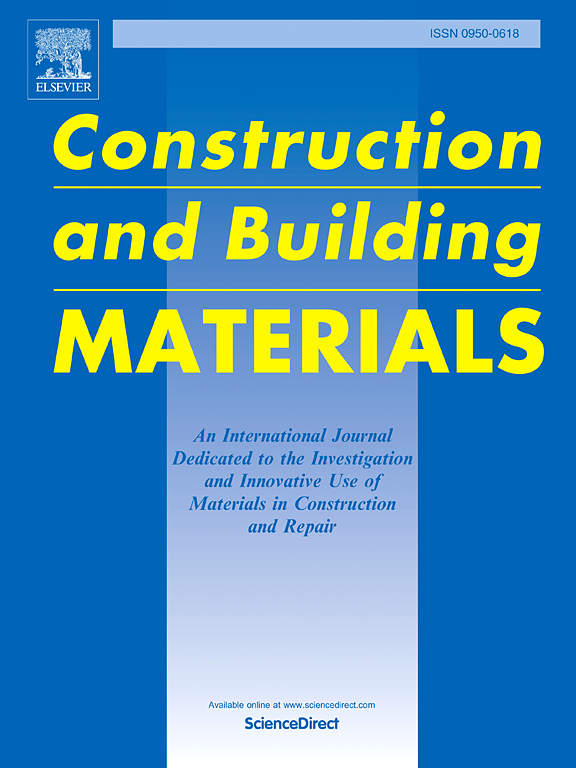Investigation of macro-cell corrosion in rebar within cracked concrete beams under sustained loading conditions in the simulated marine environment
IF 7.4
1区 工程技术
Q1 CONSTRUCTION & BUILDING TECHNOLOGY
引用次数: 0
Abstract
Existing research presents the relationship between rebar corrosion and concrete transverse cracks, yet there is no clear consensus on the combined effects of crack width and marine corrosion environments on macro-cell corrosion. In this experiment, two sets of reinforced concrete beam specimens, each with different compressive strengths, were fabricated and subjected to sustained loads to induce multiple transverse cracks and to maintain their widths. Electrochemical techniques were utilized to investigate both macro-cell and micro-cell corrosion of rebar in cracked concrete beams across various simulated marine environments. The test results indicate that for crack widths up to 0.3 mm, the micro-cell corrosion current density of rebar in the full immersion corrosion zone is higher than that in the water level fluctuation zone. However, when the crack width is reduced to below 0.2 mm, the micro-cell corrosion current density decreases significantly, showing minimal variation across different corrosion zones. In the full immersion corrosion zone, cracks in the reinforced concrete beams generally do not cause macro-cell corrosion of the rebar. In contrast, in the water level fluctuation zone, macro-cell corrosion occurs, with wider cracks leading to more severe macro-cell effects. The effective macro-cell current accounts for about 40 % of the total corrosion current for rebar acting as macro-anodes. However, the macro-cell effect gradually diminishes as the cracks undergo self-healing.
求助全文
约1分钟内获得全文
求助全文
来源期刊

Construction and Building Materials
工程技术-材料科学:综合
CiteScore
13.80
自引率
21.60%
发文量
3632
审稿时长
82 days
期刊介绍:
Construction and Building Materials offers an international platform for sharing innovative and original research and development in the realm of construction and building materials, along with their practical applications in new projects and repair practices. The journal publishes a diverse array of pioneering research and application papers, detailing laboratory investigations and, to a limited extent, numerical analyses or reports on full-scale projects. Multi-part papers are discouraged.
Additionally, Construction and Building Materials features comprehensive case studies and insightful review articles that contribute to new insights in the field. Our focus is on papers related to construction materials, excluding those on structural engineering, geotechnics, and unbound highway layers. Covered materials and technologies encompass cement, concrete reinforcement, bricks and mortars, additives, corrosion technology, ceramics, timber, steel, polymers, glass fibers, recycled materials, bamboo, rammed earth, non-conventional building materials, bituminous materials, and applications in railway materials.
 求助内容:
求助内容: 应助结果提醒方式:
应助结果提醒方式:


